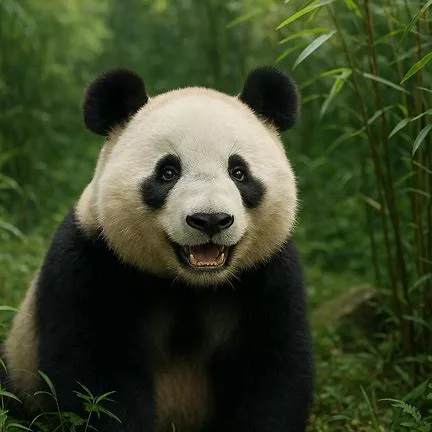
Top 10 Endangered Species You Can Help Save
_______
Why Biodiversity Matters?
Wildlife around the world is facing some serious challenges, and many unique animals are at risk of disappearing forever. Endangered species aren’t just rare; they’re a really important part of the ecosystems. Biodiversity keeps ecosystems balanced and rich with genetic variation. Protecting them isn’t just about saving unique animals; it’s about making sure the world works for everyone, including humans. Here’s my look at the top 10 endangered species and some practical ways to support their survival. One of Sierra club’s approved best wildlife cams brought to you by Explore.org is the Wolong Grove Panda cam at Shenshuping Gengda Panda Center in China. This place plays a key role in their conservation with real life solutions and is featured below.
The Importance of Saving Endangered Species
Every animal plays a part in its ecosystem. When a species goes extinct, it can cause significant concerns, sometimes in ways we don’t see right away. Endangered species help keep nature balanced, which makes the water cleaner, the air fresher, and the food chain more stable. On top of that, many plants and animals are still sources for medicine and new discoveries. Saving them means we’re not closing doors on things we haven’t even found out about yet.
Endangered Species Research Results
Reports from groups like the International Union for Conservation of Nature (IUCN) show that over 42,000 species are threatened with extinction. These numbers are a wake-up call, especially since most animals on this list are here because of human activities like habitat loss, poaching, pollution, and climate change.
Top 10 Endangered Species to Save
There are hundreds of endangered animals, but some are especially recognizable and need urgent attention. I’ve pulled together this list based off the current IUCN Red List, the World Wildlife Fund(WWF), and a few other major conservation groups. So, here are the top 10 endangered species to save:
Current International Union for Conservation of Nature(IUCN) Red List
Amur Leopard – Habitats in East Russia and China

There are fewer than 100 left in the wild, these are beautiful rare spotted cats. Loss of forest and poaching for their fur are big threats. Groups like the WWF and Panthera are working to protect what’s left of their habitat and keep poachers away
Soala – Habitats in Vietnam and Laos

Sometimes called the “Asian unicorn,” the Saola is so rare that it was only tracked down in 1992. These antelope like creatures are still here, but habitat loss and hunting are taking a huge toll.
Cross River Gorilla – Habitats in Nigeria-Cameroon border

There are Fewer than 300 remain in the wild, hidden in forests. These shy Cross River Gorillas avoid humans, but deforestation and bush meat hunting are big issues for their survival.
Sumatran Orangutan – Habitat in Indonesian island of Sumatra

These orangutans are in big trouble due to palm oil plantations competing for space in their habitats. They’re awesome climbers and important for spreading seeds, helping the forest grow back.
Black Rhino – Habitats in South Africa, Namibia, Zimbabwe, and Kenya

Once in considerably higher numbers, the Black Rhino populations have dropped 98% over the past century. Poaching for their horns is the main reason, but conservation programs have helped slow their decline in some spots.
Hawksbill Turtle – Habitats in Coral Reef Ecosystems

These turtles have gorgeous shells that people used for jewelry, which nearly wiped them out. They’re really important for healthy coral reef ecosystems, so losing them additionally influences fish and plant life in the ocean in an unfortunate way.
Giant Panda – Habitat in China

They are symbols of conservation, and habitat loss almost wiped them out. Thanks to lots of effort from groups like the WWF and changes in forest management, their numbers are slowly growing again, but they remain at risk.
Vaquita – Habitat in Gulf of California

This is the world’s rarest marine mammal. With fewer than 10 individuals left, their numbers have crashed due to getting caught in illegal fishing nets.
Asian Elephant – Habitats in India, Sri Lanka, Myanmar, Thailand, Cambodia, Laos, Vietnam, Malaysia, Indonesia, and China

These magnificent mammals face shrinking habitats and conflict with people as farmland expands. They’re already extinct in some regions, but wildlife corridors and protected areas are giving them safe spaces to roam.
Javan Rhino – Habitat in Indonesia

Their populations are down to just about 70 individuals. They’re super shy and stick to dense jungle in remote areas. Poaching for their horns and land development have pushed them close to extinction.
How Can I Help Save Endangered Species?
Even if you don’t live near these animals, there are ways to help from just about anywhere. People like me (and hopefully you) can make some small changes that add up over time. Here’s helpful suggestions on how endangered species can be saved.

- Support Conservation Groups: Organizations like WWF, Panthera, and local wildlife trusts run projects that directly protect habitats and animals. Donations go a long way, but even sharing their updates and campaigns online can help get the word out.
- Shop Responsibly: Choosing sustainable products makes a real difference. For example, picking items labeled with “RSPO Certified” palm oil means less rainforest gets destroyed for Orangutan habitats.
- Reduce Plastic Waste and Pollution: Animals like sea turtles and suffer from ocean plastic and discarded fishing nets. Using less plastic and supporting companies that are cutting down on plastic packaging really helps.
- Adopt an Animal: Symbolic adoptions help fund fieldwork and raise money for anti poaching patrols, wildlife vets, and new habitat initiatives. A lot of conservation charities let you adopt a favorite species and even send updates about the animal you’re helping out.
- Write to Policymakers: Telling local government reps that species and nature protection matter can help push laws that protect habitats and ban illegal wildlife products.
- Travel Responsibly: If you’re ever lucky enough to visit habitats or see wildlife tours, pick companies that work with local communities and don’t disturb the animals.
Tough Challenges that Endangered Species Face
Even with all our efforts, endangered species have some serious hurdles to overcome. Understanding what puts them at risk is super important if we want to see them stick around.
- Habitat Loss: Farming, mining, logging, and new cities all eat into places where animals live. Replanting and restoring wild areas is a slow process, so stopping habitat loss in the best place to start.
- Poaching and Illegal Wildlife Trade: Black markets for animal products threaten rhinos, elephants, and many other species. Supporting strict anti poaching laws and alternative income programs for local people can ease the problem like ecotourism.
- Climate Change: Rising ocean temperatures, changing rain patterns, and more extreme weather mean some animals can’t find food or safe places to nest. Keeping our own carbon footprints small by using less energy and supporting green energy projects helps slow these changes.
- Invasive Species: Sometimes, plants or animals introduced by humans take over, pushing out local species or spreading new diseases. Careful checks on what gets introduced to new areas can reduce these risks.
- Human-Wildlife Conflict: In some places, local people and animals come into conflict; elephants raid crops, or big cats attack livestock. Programs that offer compensation, build better fences, or create wildlife corridors that let both humans and animals thrive together.
Habitat Loss
Forests, grasslands, and coral reefs are disappearing at a fast rate. I’ve seen photos of regions completely changed within just a few years. Groups like Global Forest Watch offer satellite maps so you can actually track how landscapes are changing over time, and you can even get involved in local tree planting drives or donate to forest restoration programs.
Poaching and Illegal Trade
Rhinos and Elephants have been poached mostly for horns and ivory, but smaller animals and exotic pets are also at risk. Conservationists have started using high tech solutions like drones and camera traps to catch poachers before they strike. Even reporting suspicious online ads or buying animal products can make a difference when done by enough people.
Climate Change Effects
All habitats containing unique wildlife are at risk as the climate change continues to occur. Supporting policies and projects that lower emissions in your city helps create a bigger impact. Every person who switches to greener living helps lessen big issues for wildlife across the globe.
Learn More about the Energy Revolution System
**Please note: Our website contains affiliate links. This means if you click and make a purchase to help the environment, we may receive a small commission. There’s no extra cost to you. It’s a simple way you can support our mission to bring you quality content and also aid wildlife conservation.**
Frequently Asked Questions
Here are some common questions regarding the importance of protecting endangered species.
Question: How do scientists decide if a species is endangered?
Answer: Experts use things like how many animals there are, how fast their population is shrinking, and how much habitat they have left. The IUCN Red List updates these categories regularly.
Question: What’s the difference between endangered and critically endangered?
Answer: Critically endangered species are at an even higher risk of going extinct very soon, while endangered species still have a slightly bigger range or population left. Both groups need urgent help.
Question: Can zoos help save endangered animals?
Answer: Some zoos run breeding and reintroduction programs for animals nearly gone in the wild. Good zoos team up with international groups to help grow numbers and sometimes bring animals back to their natural habitats.
Educational Information is courtesy of Smithsonian Zoo and Conservation Biology Institute
Question: What’s the best way for one person to make a difference?
Answer: Even small changes help when lots of people join in. Supporting conservation groups, cutting down on waste, and spreading the word about endangered animals all add up to potential solutions.
Why Your Help Really Counts
Endangered species need more than protection; they need people to care about what happens to them. Everyone has a part to play, from picking sustainable products to donating to wildlife rescues. Action at any level, big or small, creates positive change. If you’re looking to get started, check out groups like the IUCN, WWF, or local wildlife organizations for volunteer opportunities and ways to support these animals before it’s too late.
Protecting endangered species is about preserving the benefits of biodiversity for future generations. Once a species disappears, it’s gone for good, but every conscious action helps to strengthen their chances of survival.
